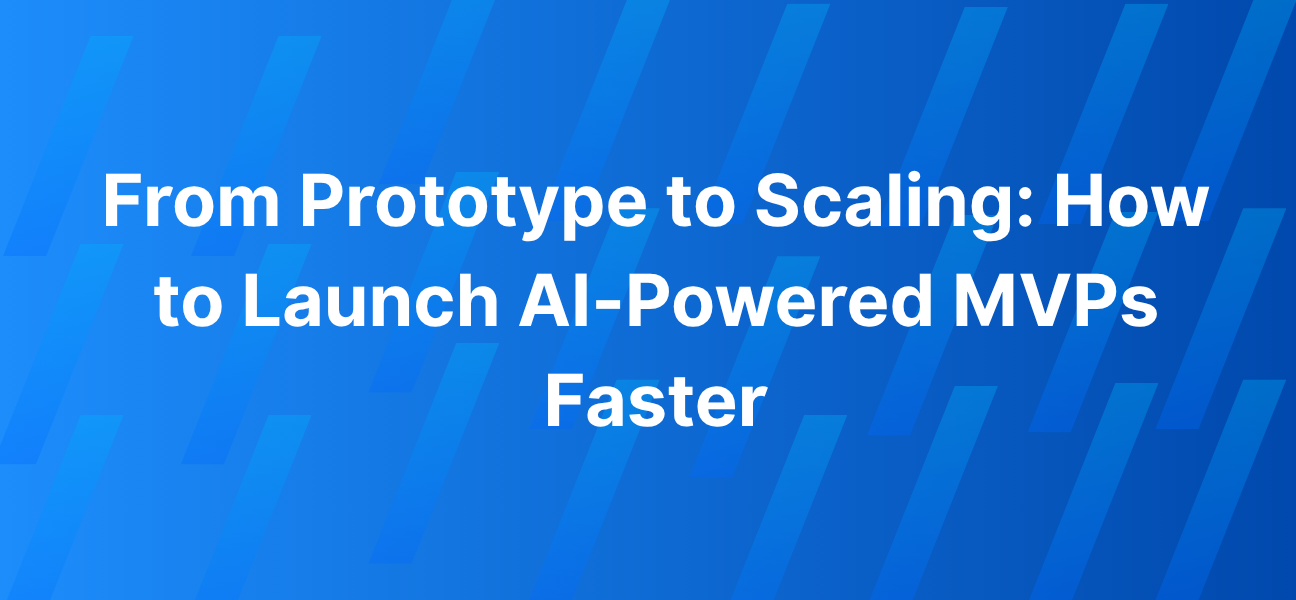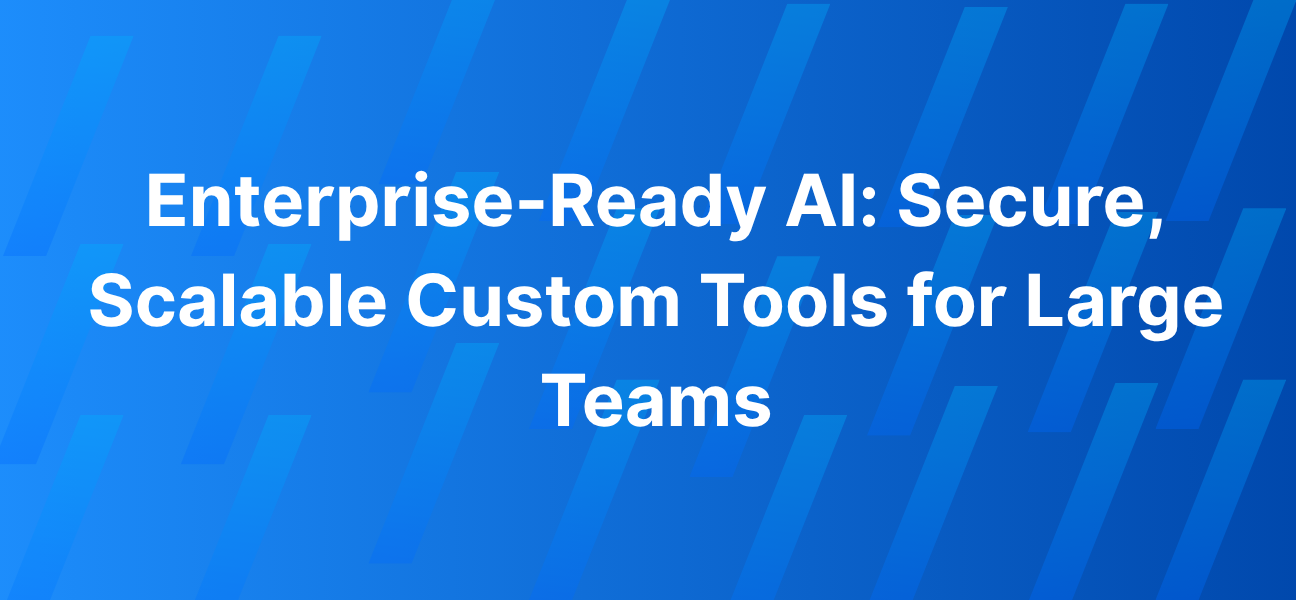Shipping an AI prototype is exciting — shipping an AI product that reliably creates customer value at scale is hard.
This guide gives a pragmatic, step-by-step playbook to accelerate that journey: how to build a minimum viable product (MVP) for AI quickly, avoid common traps, and put in place the scaffolding you need to scale safely and cheaply.
I’ll cover strategy, data & model choices, engineering best practices (MLOps), testing and rollout patterns (canary/A-B), monitoring & drift management, cost control, and a realistic 90-day pilot plan you can run with your team.
Why speed + discipline matters for AI MVPs
Fast iteration wins. A short feedback loop finds product-market fit sooner, avoids wasted engineering effort, and reduces risk.
But speed without discipline introduces technical debt (unreproducible training, stealth pipelines, brittle inference) that makes scaling painful.
The answer is a lean, reproducible pipeline plus small, production-grade guardrails so your prototype can survive real user traffic.
MLOps best practices — experiment tracking, automated validation, reproducible pipelines, and observability — are what let teams move fast and safely.
These practices consistently reduce time-to-market for AI products.
Core principles (your north star)
- Solve one meaningful problem — pick the smallest scope that still delivers measurable impact.
- Measure what matters — define business KPIs (conversion lift, time saved, ARR impact).
- Iterate quickly with reproducibility — version data, code and models so any build can be reproduced.
- Ship with safety — lightweight monitoring, canary rollouts, human-in-the-loop for edge cases.
- Plan to scale, not to re-architect — keep architecture modular so components can be replaced or hardened later.
Step-by-step: from prototype → production-ready MVP
1) Define the MVP and success metrics (Day 0–7)
- Scope one core user job (e.g., “auto-categorize invoices and route exceptions”).
- Define 2–3 measurable KPIs (accuracy, end-to-end time, cost per claim).
- Decide failure modes that require human intervention.
Why? Clear scope eliminates scope creep and lets you optimize for measurable wins.
2) Quick data & labeling strategy (Day 0–14)
- Build a tiny, high-quality labeled dataset (cheap wins beat noisy scale).
- Use annotation tools or hire contractors for focused labeling tasks.
- Version datasets from day one (so experiments are reproducible).
Use DVC + remote storage or experiment trackers to manage dataset versions and pipelines — this is central to reproduce experiments and audits.
3) Choose the right model & reuse existing assets (Day 7–21)
- Prefer pre-trained models and transfer learning (fine-tune rather than train from scratch).
- For text tasks, leverage transformer models (Hugging Face) or use embeddings + a lightweight classifier.
- For vision, start with a standard CNN backbone and fine-tune.
Reusing pre-trained models reduces training time, compute cost, and improves initial quality — essential for speed.
4) Build an iterative training pipeline (Day 10–30)
- Automate data ingestion → training → evaluation → artifact registration.
- Track experiments and models with MLflow or similar so you can compare runs, parameters, and metrics.
- Containerize training jobs to ensure parity between local and cloud runs.
Experiment tracking and reproducible pipelines avoid the “works-on-my-machine” trap and accelerate iteration.
5) Keep features simple — use a feature store if you’ll scale (Day 14–40)
- For MVPs, compute features close to the data pipeline and log them for reproducibility.
- If you expect real-time inference and many consumers, adopt a feature store (Feast / Tecton) to ensure training/serving parity and faster productionization. Feature stores prevent subtle skew between training and serving data.
6) Lightweight prototype UI (Day 21–35)
- Build a simple web front-end for user testing (Streamlit/Gradio for internal demos; a small React app + FastAPI for external pilots).
- Focus on UX for the one job you defined — show confidence scores, allow feedback, and enable easy error reporting.
7) Fast, safe inference & deployment (Day 28–45)
- Start with managed endpoints (cloud model endpoints / serverless) for speed, then move to containerized services when you need control.
- Adopt rollout strategies: canary or A/B deployments to compare new models against baseline on real traffic — catch unexpected regressions early.
8) Monitoring, drift detection & retraining (Day 30+)
- Log predictions, inputs, confidence, latency and business outcomes.
- Monitor performance vs baseline and detect distributional drift (input feature shift) and concept drift (label behavior change).
- Set automated alerts and a retraining cadence or human-in-the-loop workflow for flagged cases. Monitoring and drift management are non-negotiable for safe scaling.
9) Automate CI/CD & model governance (Day 40–60)
- Use CI pipelines to lint, test, build images and run smoke tests.
- Use GitOps for deployments and track model lineage in your registry.
- Implement approval gates (performance thresholds) before production rollout.
Version everything — code, infra, data, model artifacts. Model versioning tools can help manage configs, dependencies and deployments.
10) Scale: optimize cost, latency, and reliability (Day 60+)
- Optimize inference: batching, quantization, caching, and autoscaling.
- Move from managed endpoints to dedicated inference clusters if traffic/latency demands it.
- Introduce feature stores, streaming pipelines, and SLOs for reliability as usage grows.
A realistic 90-day MVP → Scale roadmap
- Days 0–14: Define MVP, collect/label data, baseline model.
- Days 15–30: Build training pipeline, experiment tracking, prototype UI.
- Days 31–45: First production-like endpoint + internal pilot; implement basic monitoring.
- Days 46–75: Canary rollouts, automated tests & governance, retrain loop.
- Days 76–90: Optimize inference, set SLOs, plan scale (feature store, streaming, cost optimizations).
This cadence focuses on measurable milestones and safe production readiness without overengineering.
KPIs to track (business + technical)
- Business: conversion lift, time saved per user, reduction in manual processing cost, NPS.
- Technical: model accuracy / precision / recall, latency (p95), error rate, drift alerts, uptime, cost per 1k inferences.
- Operational: deployment frequency, mean time to recovery (MTTR), data pipeline freshness.
Track these from day one — they guide prioritization and justify scaling decisions.
Common pitfalls & how to avoid them
- Overfitting to lab data: Test on real user traffic early — use canaries/A-B tests.
- No reproducibility: Version data & models so you can rewind and debug.
- Ignoring drift: Put simple monitoring in place even for pilots.
- Building too much up front: Start with the minimal feature set that delivers value — expand after validation.
Final checklist (ready to launch)
- Clear MVP scope + 2–3 KPIs
- Labeled dataset + data versioning in place
- Experiment tracking & reproducible training pipeline
- Prototype UI with user feedback capture
- Managed inference endpoint + canary rollout configured
- Basic monitoring + drift detection implemented
- CI/CD for model and infra artifacts
- Plan for scaling (feature store, streaming, SLOs)
Conclusion & next step (for at20.ai readers)
Launching an AI MVP fast doesn’t mean cutting corners — it means building the right corners: reproducible pipelines, minimal production safety nets, and measurement that ties model behavior to business outcomes.
Apply the 90-day roadmap above and you’ll convert prototypes into reliable, scalable products with minimal rework.
If you’d like a tailored 90-day plan, an MVP build sprint, or help implementing MLOps guardrails (data versioning, feature store, canary rollouts and monitoring), at20.ai can partner with your team to accelerate safely.
Reach out and we’ll run a free intake to scope a pilot and estimate time & cost.
FAQ
Q: How long does it take to get a production-ready AI MVP?
A: With focused scope and data, many teams hit an internal pilot in 4–8 weeks and a production-ready MVP in 8–12 weeks using the playbook above.
Q: Do we need full MLOps to start?
A: No — start with light-weight MLOps: experiment tracking, dataset/versioning, and basic monitoring. Harden these as you scale.
Q: What’s the cheapest way to prototype inference?
A: Use managed endpoints or serverless functions for early inference; move to containers or dedicated clusters once demand grows.




